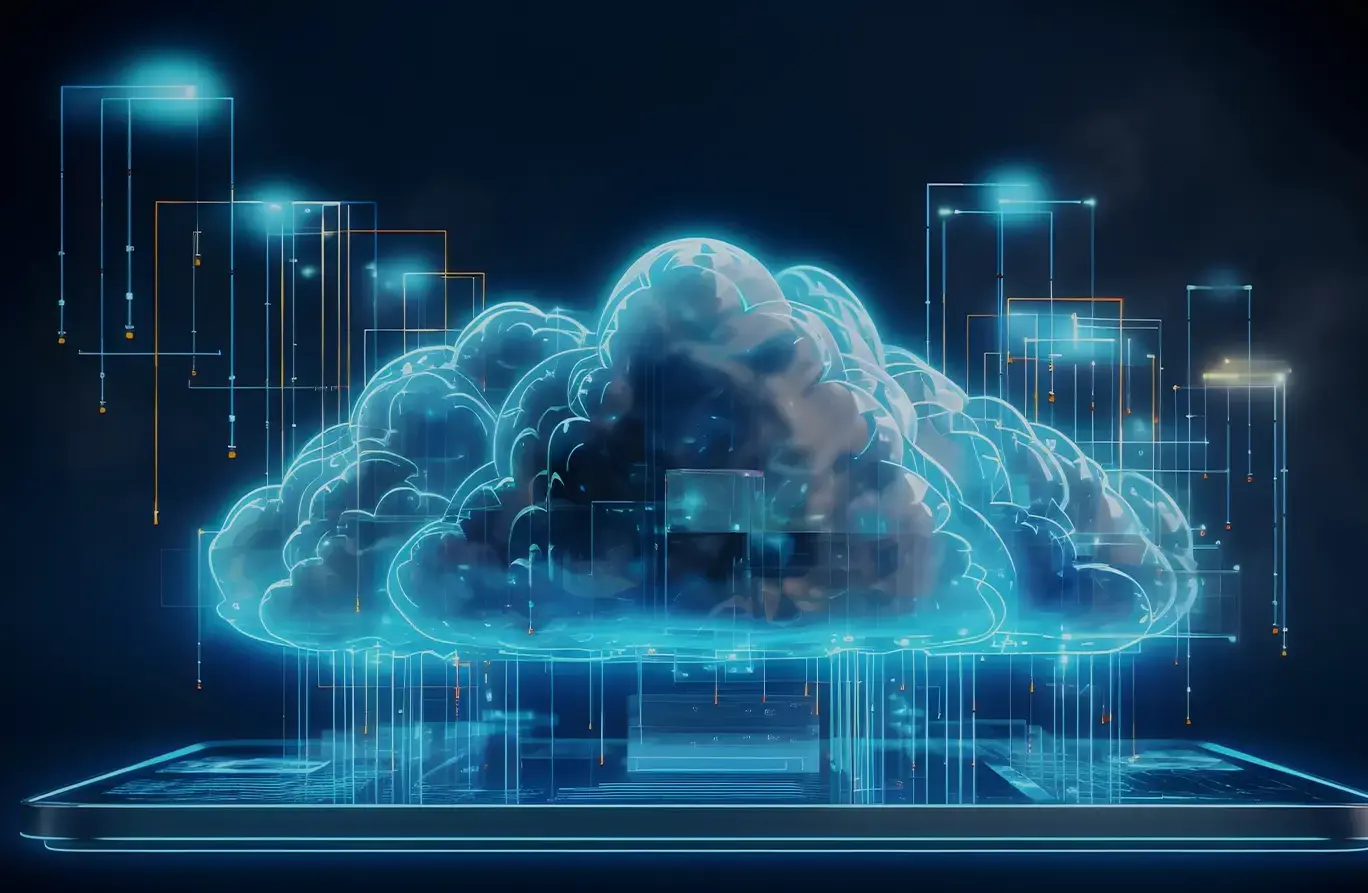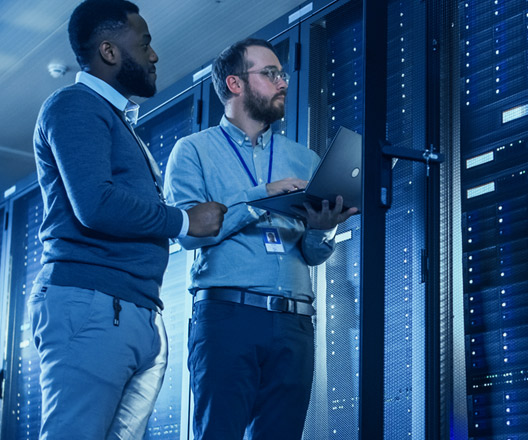
Listen to this blog
Upgrading enterprise resource planning (ERP) systems can be complex and expensive, but it is often unavoidable. CIOs can take a cue from digital-native companies and embrace speed, flexibility, and scalability to create value for the business by enabling technology decisions that maximize freedom and independence for their developers and reducing their system dependencies and complexities. Focusing ERP upgrade efforts on the modules within the system rather than the entire system can reduce dependencies, spending, risk, and time.
However, a product and platform approach underscores two clear principles: treating the ERP system as a sum of capabilities rather than a monolithic stack and the product driving the decision regarding the parts of the ERP system to use.. This is why determining which elements of the ERP system directly support the business strategy and dividing functions into differentiating and non-differentiating ERP capabilities is crucial. It can help CIOs lower costs and risk for upgrades to the low-value parts of the system.
A well-designed capability map can determine which cluster of modules needs to be upgraded based on value to the business. This point of view offers a potent counterweight to the prevalent paradigm in which the company's needs for modernization and functionality are defined by the vendors rather than the other way around.
The Challenges of Enterprise-wide Systems with Complex Dependencies
For IT leaders contemplating an ERP upgrade, it is important to examine how technology companies approach changes to their system landscape. These companies prioritize speed, flexibility, and scalability to create value for the business. They achieve this by minimizing system dependencies and complexities and organizing their technology around modular products and platforms operating as a service.
Many incumbent companies are burdened by enterprise-wide systems that make independent decision-making almost impossible due to complex dependencies. For example, a large pharmaceutical company using a single ERP system for both distribution and warehousing limited its ability to make changes in distribution due to dependencies with warehouse management, despite the former being a significant competitive advantage.
Another example involves a big retail company that faced similar difficulties. The company relied on a single ERP (Enterprise Resource Planning) system to handle both distribution and warehousing operations, even though distribution required more flexibility and responsiveness, while warehouse management was comparatively simpler. Unfortunately, the interdependent relationship between these two business domains within the ERP system restricted the changes that could be made to distribution It resulted in a significant amount of technical debt accumulation - causing the overall computer system to become outdated and difficult to use and maintain.
How can CIOs identify module upgrades for business value?
CIOs can reduce dependencies, decrease costs, mitigate risk, and speed up the process by focusing ERP upgrade efforts on the individual modules within the system and understanding how these modules drive business value.
Although upgrading an enterprise resource planning (ERP) system can be a costly and intricate process, adopting a business-centric approach can help manage costs and improve outcomes.
Shifting the paradigm - From Technology-thinking to Value-thinking
Digital-native companies prioritize setting their strategy before designing their platform architecture. Firstly, they identify "products", such as customer journeys that align with their strategy, and then identify the platforms needed to deliver those products. Then, for each platform, a team is assigned to manage its outcome and performance and decide whether to use existing functionality in the ERP system.
This approach treats the ERP system as a sum of capabilities, rather than a single, monolithic stack. Consequently, the product drives the decision about what parts of the ERP system to use rather than the other way around.
Moving towards a product and platform operating model requires a mindset shift for most IT organizations. Traditionally, companies have relied on buying ERP solutions and managing the vendor and system integrator for customizations. However, this is not sufficient for areas where a tailored solution is required. Legacy IT has addressed this by building on top of the ERP system, resulting in significant change management complexity.
As a result of this shift, IT will need to develop outstanding engineering skills, manage system complexities and dependencies, and work closely with the business to ensure changes align with the company's strategy.
Determining your Technology Value Chain
Once a company has a clear strategy and a product and platform operating model, the next important step is to determine which parts of the ERP system are directly supporting the business's strategy. This involves analyzing the different functions and capabilities of the ERP system and dividing them into two categories: differentiating elements that provide value to the business, such as fulfillment and logistics capabilities, and commodity functions that are not core to driving competitive advantage, such as legal or property management.
The company should prioritize investing in and customizing the differentiating elements to achieve its strategic goals. Meanwhile, the commodity functions can be left as is since they do not add significant value to the business. By creating a capability map, companies can identify which modules of the ERP system need to be upgraded based on their value to the business.
This approach empowers the business to define the boundaries of functionality and modernization needs instead of relying on the ERP vendor to do so. It shifts the focus from the ERP system as a monolithic stack to a sum of capabilities that can be tailored to meet the business's specific needs.
Value Chain Focused Upgrade – Lowering Cost and Risk
To optimize ERP upgrades, CIOs should take different approaches for differentiating and non-differentiating elements. For differentiating elements, immediate upgrades are recommended, while for non-differentiating ones, upgrades should be thoughtfully sequenced to manage costs and risks. This strategy enables upgrades to be broken down into smaller, shorter projects, reducing risk and postponing spending that can be better allocated to transformation programs that deliver value quickly.
To reduce the upgrade complexity of monolithic ERP setups in organizations, we generally recommend the following three steps:
Decouple unnecessary connections for modernizing core systems
Modernizing core systems can be a challenging task due to the multitude of connections to other applications. While some of these connections serve their intended purpose and should be left untouched, many others are workarounds or ad hoc solutions that make the modernization process complex and time-consuming. To simplify this process, the first step is to create a new layer between the core system and the applications it connects to, commonly known as a façade, through which all new connections will go via APIs.
Decoupling these connections from the core system enables changes within the system without affecting all the connected applications. The façade can be developed quickly and doesn't have to be perfect; it just needs to be functional. However, to ensure its efficient usage, developers must be incentivized to use the façade through effective governance mechanisms, such as allowing easy access to core features and imposing penalties for non-compliance.
By decoupling unnecessary connections, modernizing core systems can become less complex, more efficient, and cost-effective.
Simplifying upgrades by extracting “necessary” customizations
The other major challenge companies face when upgrading their core systems is dealing with the complex customizations that have been implemented over time. These customizations include everything from specialized reporting functions to unique access protocols. Migrating these customizations to a new environment can be risky and time-consuming. However, there is a solution to simplify this process: building a digital platform in the cloud that can be accessed through microservices or investing in a product that provides these functionalities out of the box.
To simplify the process, it's important to assess which customizations are essential and which are no longer needed. By doing this, unnecessary customizations can be removed, reducing complexity and making the upgrade smoother.
Streamline the core – MVP Approach
To streamline the core system, it's crucial to remove customizations and then reduce them to their essential functionality. The core of ERP should be mapped to the out-of-the-box functionality of a modern platform as much as it can. This process includes optimizing the code base to make it more comprehensible and straightforward to fix or replace.
It's worth noting that this process does not need to affect standard functional domains, such as accounting or controlling, that perform routine tasks within the ERP system. If necessary deviations exist in core processes, those must be carried to the new platform. Yet to make the implementation simple, less costly, and risky, adherence to innovative processes is desired with the least customization.
An MVP approach can be adopted where the new product, with the least customization in the core, can be tested for conformance to the business process outlined in the capability map. The above-mentioned “decomposition” of customizations is related to functions that are often part of a tightly integrated core for no apparent reason, such as warehouse management, demand forecasting, or transportation.
The Visionet Advantage
Maximizing the ROI of ERP platforms requires CIOs to prioritize business value and adopt a product and platform approach. By embracing speed, flexibility, and scalability, CIOs can make technology decisions that reduce system dependencies and complexities, empowering businesses to define the boundaries of functionality and modernization needs.
Visionet's Drive365 offers a smooth transition to Dynamics 365 ERP, including a feature gap analysis, customization recommendations, upgrade timelines, and licensing transitions. With platform expertise for Dynamics 365 ERP and seamless integrations, Visionet is the ideal partner for businesses seeking to optimize their Dynamics 365 ERP migration, leading to increased productivity, improved efficiency, lower costs, mitigated risks, and more compliance.




